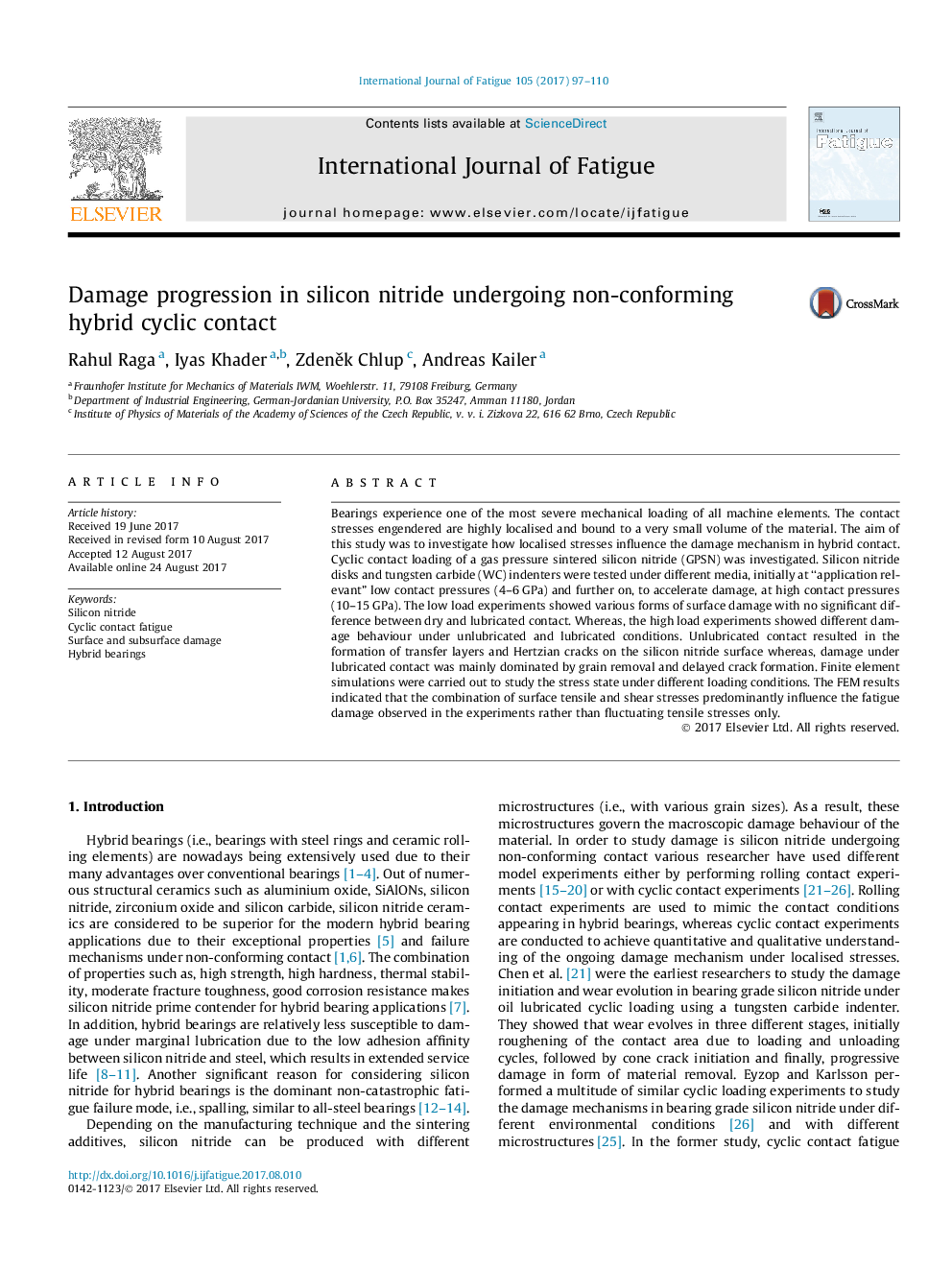| Article ID | Journal | Published Year | Pages | File Type |
|---|---|---|---|---|
| 5014911 | International Journal of Fatigue | 2017 | 14 Pages |
Abstract
Bearings experience one of the most severe mechanical loading of all machine elements. The contact stresses engendered are highly localised and bound to a very small volume of the material. The aim of this study was to investigate how localised stresses influence the damage mechanism in hybrid contact. Cyclic contact loading of a gas pressure sintered silicon nitride (GPSN) was investigated. Silicon nitride disks and tungsten carbide (WC) indenters were tested under different media, initially at “application relevant” low contact pressures (4-6Â GPa) and further on, to accelerate damage, at high contact pressures (10-15Â GPa). The low load experiments showed various forms of surface damage with no significant difference between dry and lubricated contact. Whereas, the high load experiments showed different damage behaviour under unlubricated and lubricated conditions. Unlubricated contact resulted in the formation of transfer layers and Hertzian cracks on the silicon nitride surface whereas, damage under lubricated contact was mainly dominated by grain removal and delayed crack formation. Finite element simulations were carried out to study the stress state under different loading conditions. The FEM results indicated that the combination of surface tensile and shear stresses predominantly influence the fatigue damage observed in the experiments rather than fluctuating tensile stresses only.
Related Topics
Physical Sciences and Engineering
Engineering
Mechanical Engineering
Authors
Rahul Raga, Iyas Khader, ZdenÄk Chlup, Andreas Kailer,
